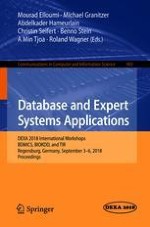2018 | Buch
Database and Expert Systems Applications
DEXA 2018 International Workshops, BDMICS, BIOKDD, and TIR, Regensburg, Germany, September 3–6, 2018, Proceedings
herausgegeben von: Prof. Mourad Elloumi, Michael Granitzer, Abdelkader Hameurlain, Christin Seifert, Prof. Dr. Benno Stein, A Min Tjoa, Prof. Dr. Roland Wagner
Verlag: Springer International Publishing
Buchreihe : Communications in Computer and Information Science
